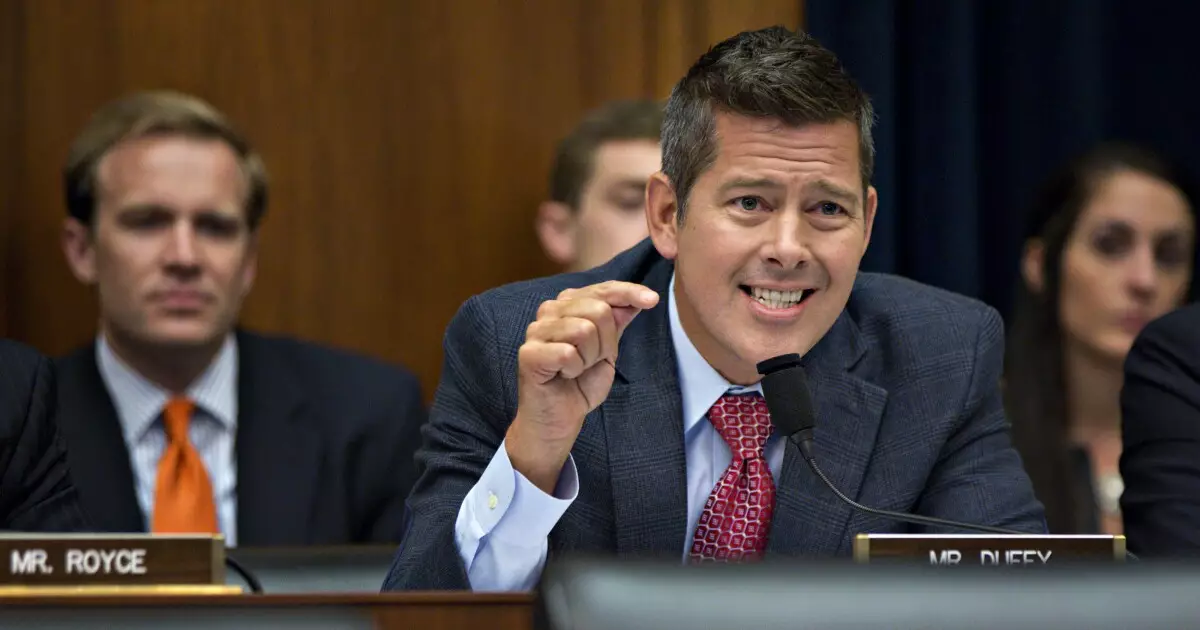The announcement of Sean Duffy as Donald Trump’s nominee to head the U.S. Department of Transportation has elicited a mixture of enthusiasm and skepticism. Trump’s assertion that Duffy will bring a wealth of experience and relationships from his nine-year tenure in Congress speaks to a strategic hope for a smoother path toward ambitious infrastructure reforms. Yet, his background as both a lobbyist and a former reality TV star raises pertinent questions about the adequacy of his qualifications for overseeing a department that plays a critical role in the nation’s infrastructure.
The Landscape of Transportation Under Biden
The stakes are notably higher for Duffy as he steps into this new role, particularly in the context of substantial growth within the Department of Transportation under the Biden administration. The implementation of the Infrastructure Investment and Jobs Act (IIJA), a massive five-year program with a budget of approximately $1.2 trillion, highlights significant federal involvement in modernizing the country’s infrastructure. Duffy will not only need to navigate the complexities left by this legislation but also push forward new initiatives while adapting to the evolving needs in transportation—especially as the IIJA sets to expire in 2026.
While Duffy’s experience in Congress is noteworthy, his effectiveness in this new role may hinge more on his ability to leverage relationships than his legislative record. Duffy led the Puerto Rico Oversight, Management, and Economic Stability Act, showcasing his capability in dealing with substantial financial legislation. However, transitioning from legislative responsibilities to executive function presents unique challenges. The Department of Transportation demands a leader who can not only understand the intricacies of policy but also engage with a wide array of stakeholders from state officials to private sector innovators. Duffy’s recent stint as a senior counsel at a lobbying firm could be seen as an asset or a liability, showcasing his insider knowledge of bureaucratic navigation while raising ethical questions about his motivations.
The public response to Duffy’s nomination paints a mixed picture. Supporters, including associations like the American Association of State Highway and Transportation Officials (AASHTO), express optimism regarding his use of political acumen to push pivotal legislation through Congress. In contrast, opponents may highlight his transition from a private-sector lobbying position to a key public trust role, concerned that his previous associations may pose conflicts of interest.
Furthermore, Duffy’s personal narrative—ranging from his time as a professional lumberjack to his current role in media—sets him apart from traditional political figures. This eclectic background, while it may resonate with parts of the electorate seeking authenticity and relatability, does not inherently translate into effective governance or an understanding of the complicated world of transportation policy.
As Duffy readies to assume the leadership of one of the most crucial cabinets, he faces immediate challenges. The bipartisan nature of transportation policy is a long-standing tradition. Lawmakers like House Transportation and Infrastructure Ranking Member Rep. Rick Larsen have emphasized the importance of maintaining this cooperative spirit. For Duffy to succeed, fostering bipartisan support will be critical, especially in light of the diverse political landscape that currently defines Congress.
Additionally, Duffy must address pressing national challenges such as infrastructure decay, climate change impacts on transportation systems, and the urgent need for modernization. The expectations will be high for him to employ innovative approaches, not only to enhance safety and efficiency but also to lead the U.S. into a new era of travel post-pandemic.
Sean Duffy’s appointment to helm the U.S. Department of Transportation embodies a significant moment of potential progress interwoven with political tension. Whether he will be able to seamlessly transition from a media personality and lobbyist into a consensus-building leader remains to be seen. His success will depend not only on his past experiences or political affiliations but also on his ability to address the widening gap between need and funding, while navigating the multifaceted and often contentious landscape of U.S. transportation policy.

